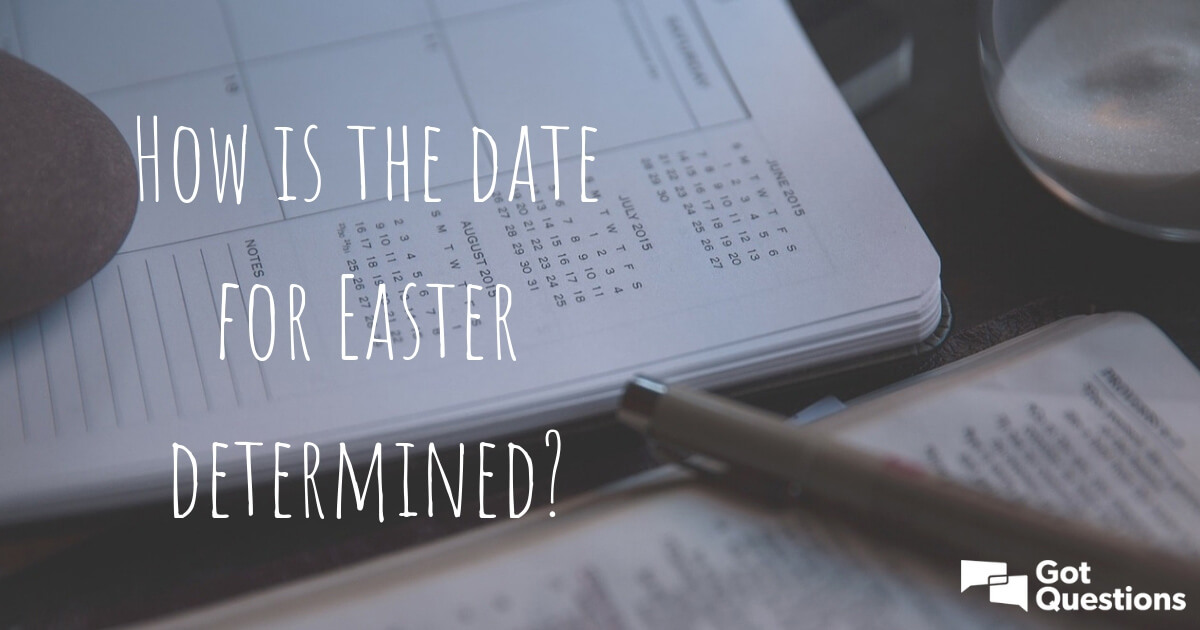How Is Easter Determined
- How Is Easter Determined In The Roman Catholic Church
- How Is Easter Determined Each Year
- How Is Easter Determined Catholic
How Easter Date Is Determined. Now the ecclesiastical full moon can actually be at a different time than the actual astronomical full moon at least for various locations. This is a result of that confusing confluence of time and space that is known as the international date line. The full moon, at locations near the date-line can occur at. The usual statement, that Easter Day is the first Sunday after the full moon that occurs next after the vernal equinox, is not a precise statement of the actual ecclesiastical rules. The full moon involved is not the astronomical Full Moon but an ecclesiastical moon (determined from tables) that keeps, more or less.
Mater Dolorosa Catholic Church - HOW IS THE DAY OF EASTER DETERMINED Mater Dolorosa Catholic Church THE DATE OF EASTER How is it determined?. Easter is an annual festival observed throughout the Christian world. The date for Easter shifts every year within the Gregorian Calendar. Crystal maker download crack for gta. The Gregorian Calendar is the standard international calendar for civil use.
In addition, it regulates the ceremonial cycle of the Roman Catholic and Protestant churches. The current Gregorian ecclesiastical rules that determine the date of Easter trace back to 325 CE at the First Council of Nicaea convened by the Roman Emperor Constantine. At that time the Roman world used the Julian Calendar (put in place by Julius Caesar).
The Council decided to keep Easter on a Sunday, the same Sunday throughout the world. To fix incontrovertibly the date for Easter, and to make it determinable indefinitely in advance, the Council constructed special tables to compute the date. These tables were revised in the following few centuries resulting eventually in the tables constructed by the 6th century Abbot of Scythia, Dionysis Exiguus. Nonetheless, different means of calculations continued in use throughout the Christian world. In 1582 Gregory XIII (Pope of the Roman Catholic Church) completed a reconstruction of the Julian calendar and produced new Easter tables.
One major difference between the Julian and Gregorian Calendar is the 'leap year rule'. See our FAQ on Calendars for a description of the difference. Universal adoption of this Gregorian calendar occurred slowly. By the 1700's, though, most of western Europe had adopted the Gregorian Calendar. The Eastern Christian churches still determine the Easter dates using the older Julian Calendar method. The usual statement, that Easter Day is the first Sunday after the full moon that occurs next after the vernal equinox, is not a precise statement of the actual ecclesiastical rules. The full moon involved is not the astronomical Full Moon but an ecclesiastical moon (determined from tables) that keeps, more or less, in step with the astronomical Moon.
The ecclesiastical rules are: • Easter falls on the first Sunday following the first ecclesiastical full moon that occurs on or after the day of the vernal equinox; • this particular ecclesiastical full moon is the 14th day of a tabular lunation (new moon); and • the vernal equinox is fixed as March 21. Resulting in that Easter can never occur before March 22 or later than April 25. The Gregorian dates for the ecclesiastical full moon come from the Gregorian tables. Therefore, the civil date of Easter depends upon which tables - Gregorian or pre-Gregorian - are used.
How Is Easter Determined In The Roman Catholic Church

How Is Easter Determined Each Year
Install mac os 9 on parallels movie. The western (Roman Catholic and Protestent) Christian churches use the Gregorian tables; many eastern (Orthodox) Christian churches use the older tables based on the Julian Calendar. In a congress held in 1923, the eastern churches adopted a modified Gregorian Calendar and decided to set the date of Easter according to the astronomical Full Moon for the meridian of Jerusalem. However, a variety of practices remain among the eastern churches.
How Is Easter Determined Catholic
There are three major differences between the ecclesiastical system and the astronomical system. • The times of the ecclesiastical full moons are not necessarily identical to the times of astronomical Full Moons. The ecclesiastical tables did not account for the full complexity of the lunar motion.